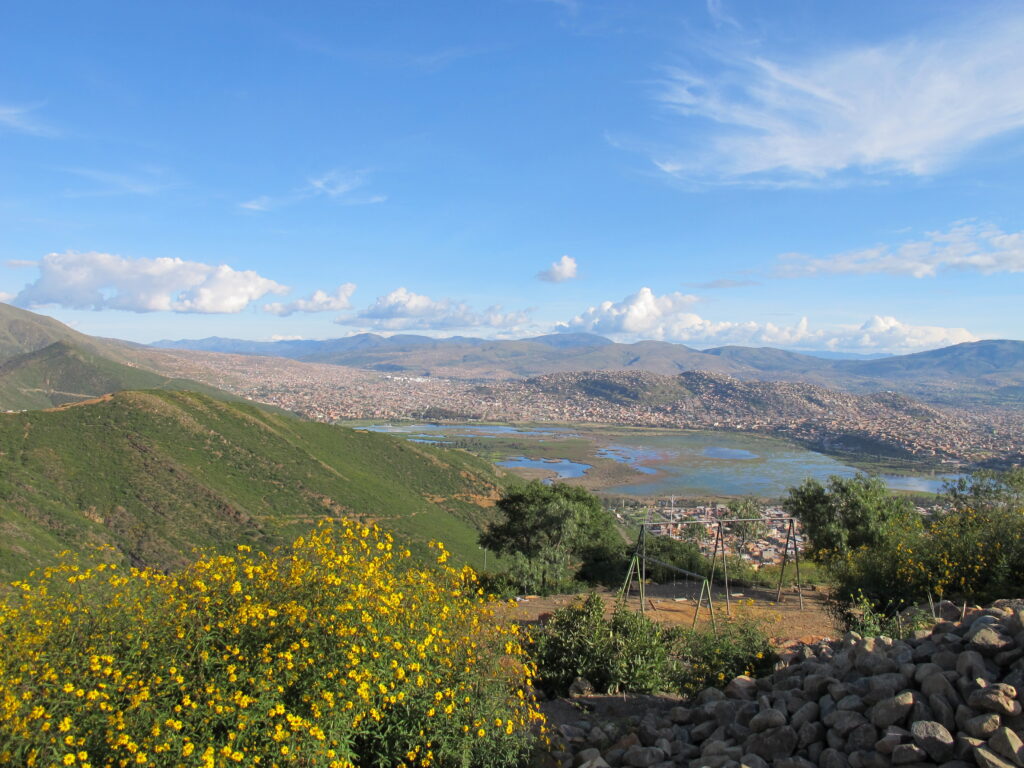also available in Spanish
20 years have passed since the water wars in Cochabamba. Decision-makers around water management in Bolivia have since been forced to rethink the planning of water to meet the demand of the population and guarantee access that is also affected by climate change.
Through 20 workshops in 25 municipalities of Cochabamba, SEI Researchers worked on the formulation and updating of the Rocha River Basin Master Plan with a climate change adaptation approach.
2020
In January 2000, communities of Cochabamba, the third-largest city in Bolivia, ran to the streets to demand access and equity in water distribution. The intense protests ended in April of the same year. 20 years later, the challenges continue and decision-makers face scenarios where water management has to meet the demand and face climate change impacts.

Photo: mishmoshimoshi/Flickr
The Rocha River Basin, located in the Department of Cochabamba, is a very important basin in Bolivia: more than 1.4 million people live in its 3 699.9 km2 of extension, which is equivalent to 13% of the country’s population. This basin faces multiple challenges related to the sustainable management of its resources. The increased demand for water, coupled with environmental and water pollution and pressure on ecosystems had led to an imbalance, exacerbated by climate change and population growth.
It has become paramount to prioritize actions that help to solve current problems and enable conditions, contributing to the Basins sustainability and avoiding critical conditions that threaten the life of the communities and ecosystems around it.
To meet the challenges of the Rocha River Basin exists the Master Plan of the Rocha River Basin (PDCR): a guide to planning water in the short, medium, and long term. The document seeks the integration and coordination among stakeholders to restore, improve, and preserve environmental, social conditions, and productivity of the Basin.
The PDCR is a pillar of the water governance model, in a context of resilience to natural disasters and climate change, to ensure food sovereignty, access to water for human consumption, and basic sanitation that contributes to the people’s quality of life.
SEI supported the Pilot Project on Climate Resilience – PPCR in the formulation and updating of the Basin Master Plan, already developed in 2015. Regarding to the previous plan, the plan presented by SEI contributes with the following innovations:

Workshop in Cochabamba with key actors. Photo: SEI
The methodology to create this document with a climate change adaptation approach had these components:
The participation of the institutions and stakeholders was a key element, a mechanism to promote environmental governance. Those who have benefited or been affected by the decisions of the basin can become aware of the relationship between their frames of reference and those of others. This process helps to understand the differences, to encourage the sharing of ideas, allowing the building of a plan focused on cooperation and well-being.
In a region where there have been wars over water, it is a great challenge to reach agreements between stakeholders to address a sustainable future of water. Water conflicts arise from the absence of mutual understanding of the problems and solutions; The participatory process is the mechanism that allows all the actors to sit at the table and present their vision. The information obtained from this participation added to a better understanding of the basin, through data and tools, encourages a way of planning with better results and future scenarios of the basin and water use.
Marisa Escobar, SEI
At the end of the process it was possible to identify actions to face the current challenges. These actions will be implemented in a time horizon until 2025. The process allowed to reach an implementation plan to achieve the proposed water management goals.
After the Rocha PDC is completed, it will be up to local organizations to generate an institutional platform for its implementation. The plan will become a living instrument that will guide the prioritization of investments for actions in the basin, achieving a sustainable future of water.
Journal article / How does the water resources system model contribute to the development of effective water planning instruments?
19 January 2021 / About Planning and modelling and Water resources
Project / Bolivia WATCH preparará a las instituciones del país con la información y la capacidad para conectar saneamiento seguro y gestión de cuencas hidrográficas.
2018 - 2021 / About Sanitation and Water resources
SEI brief / SEI researchers used the Gridded Meteorological Ensemble Tool for a water balance study in Bolivia, marking the first time the tool was applied outside the US.
7 March 2019 / About Planning and modelling and Water resources
Feature / Farmers in Bolivia are struggling as their water supply becomes increasingly unreliable. Could better models lead to policies that help the most vulnerable?
11 February 2019 / About Food and agriculture, Planning and modelling and Water resources
Design and development by Soapbox.